Health
LGBTQ blood donation drive underway across the U.S.A.
The LGBTQ supportive blood drive will take place from May 28, 2024, through National Blood Donation Day on Wednesday, Sept. 4, 2024
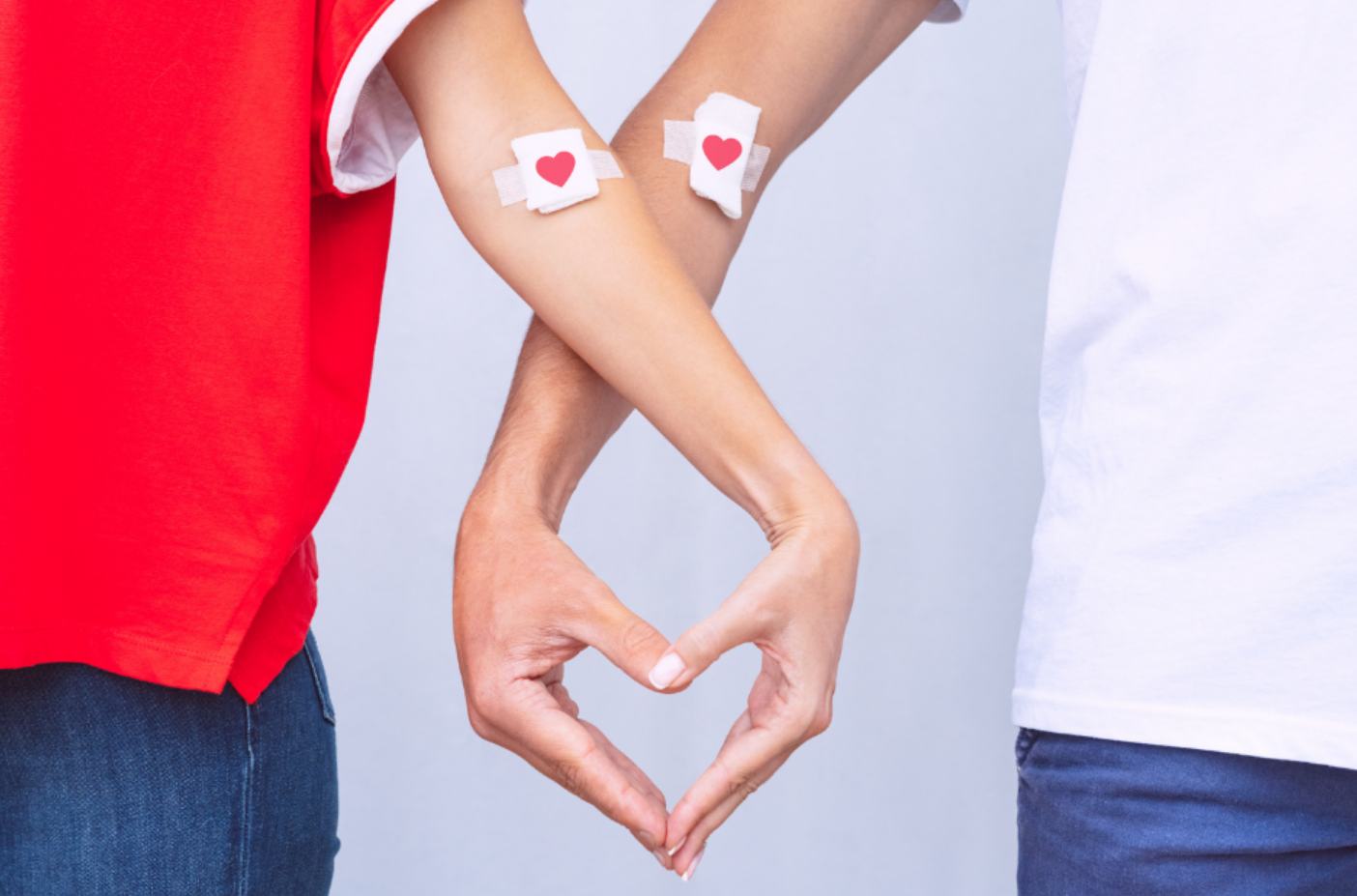
NEW YORK – GLAAD, which describes itself as the world’s leading LGBTQ media advocacy organization, and America’s Blood Centers, a national organization of community-based independent blood donation centers, announced on May 22 they have launched an LGBTQ supportive “Summer of Giving” national blood donation drive campaign.
The announcement says the campaign is aimed at encouraging “businesses to host blood drives and all eligible individuals to donate blood in support of the recent FDA eligibility changes that promote fairness and inclusivity in the donation process while maintaining the safety of the blood supply.”
The joint announcement was referring to the final revised blood donation rules issued in May 2023 by the U.S. Food and Drug Administration (FDA) that replaced a previous policy requiring men who have sex with men to abstain from sex for three months before they would be eligible to donate blood.
The previous policy was among the gradual changes made by the FDA from its original policy in the 1980s of automatically banning gay and bisexual men from donating blood due to their perceived risk of HIV infection. LGBTQ activists called that policy discriminatory because it banned all gay and bisexual men from donating blood even if they were not as individuals at risk for HIV infection.
The new policy, adopted in May 2023, according to a statement released by the FDA, put in place a screening process that asks all prospective donors regardless of their sexual orientation to answer a series of individual, risk-based questions to determine their eligibility for donating blood.
The FDA statement said implementation of the new policy “will represent a significant milestone for the agency and the LGBTQI+ community” as stated by Dr. Peter Marks, director of the FDA’s Center for Biologics Evaluation and Research.
“The ‘Summer of Giving’ is a celebration of the LGBTQ community and decades of work to remove the stigma too many potential donors have to endure,” said GLAAD President and CEO Sarah Kate Ellis in the joint statement. “Removing discriminatory barriers and following facts and science will ease the critical national blood shortage,” Ellis said, adding, “This campaign sends a long-needed message that LGBTQ people are welcome and can generously contribute to their communities to help save lives.”
Kate Fry, CEO of America’s Blood Centers, said in the statement that her organization is proud to join GLAAD to promote the facts surrounding the FDA’s change in blood donor policy, which she said, “prioritizes the safety of the blood supply while bringing more equality to the donation process.”
Fry added, “The Summer of Giving campaign is a unique opportunity for individuals and businesses to donate blood and host blood drives in support of a new era of blood donor eligibility. Together we can help save lives during a time of critical need for the blood community.”
The joint statement announcing the LGBTQ supportive blood drive says it would take place from May 28, 2024, through National Blood Donation Day on Wednesday, Sept. 4, 2024, “in recognition of the critical need for blood donations during the summer months.” According to the statement, “Despite the ongoing demand for blood products, donations typically decline during this period due to travel and the lack of school-based blood drives.”
Under the revised FDA blood donation policy, as was the case with the previous policy, anyone who tests positive for HIV is not eligible to donate blood. The new policy includes these restrictions, which apply to everyone regardless of their sexual orientation or gender:
• Any individual who has had a new sexual partner in the past three months and has engaged in anal sex in the same period is deferred for three months from the most recent sexual contact from donating blood.
• Any individual who has had more than one sexual partner in the past three months and has engaged in anal sex during that same period is deferred for three months from the most recent sexual contact.
• Any individual who has taken any oral antiviral medication to prevent HIV (PrEP or PEP) is deferred for three months from the most recent dose. These medications may delay detection of HIV and result in false negative test results.
• Any individual who has taken any long-lasting antiviral medication by injection to prevent HIV (PrEP or PEP) is deferred for two years from the time from the most recent injection. These medications may delay detection of HIV and result in false negative test results.
• Any individual who has ever taken any mediation (i.e., ART) to treat an HIV infection is permanently deferred.
GLAAD and America’s Blood Centers say further details about the new FDA blood donation policy and to find the nearest community blood center, interested persons should access glaad.org/tag/summer-of-giving.
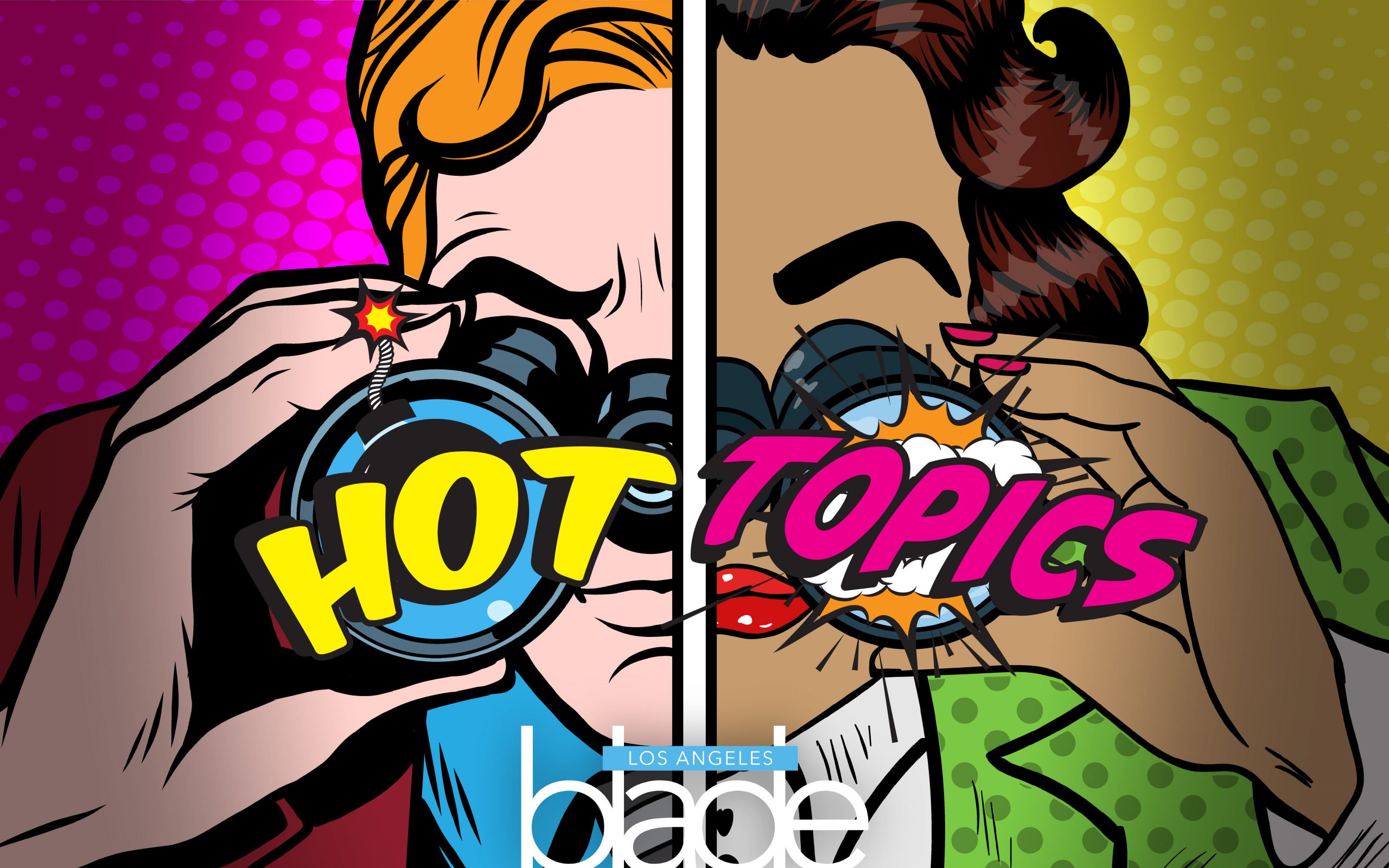
While your straight friends assume you’re having sex all the time, let’s be honest, you aren’t having as much as you’d like. It begs the question: Are you even satisfied with the sex you’re having? Is it because of how much we sacrifice to get laid?
While technology has made sex like ordering a pizza, there are a certain set of personal sacrifices that we’re being charged to scratch that itch.
The strange mingling of intimacy and the transactional nature of consumerism crosses a line we may not be able to come back from. You end up with insatiable cock goblins and people negotiating intimate encounters like a business deal.
Apps make it easier than going out to get some, and yet, we end up disembodied body parts talking to each other like animals. We sacrifice our humanity and our expectations of respect. Why should straight people get the HR-friendly polite treatment, and then you treat someone you will have inside you or be inside like shit for wanting exactly what you want?
We have this strange cultural norm of getting penalized for exhibiting interest. The internalized homophobia programmed so deeply with the fear of intimacy, the rejection of homosexuality that we punish people for expressing interest. We’re encouraged to feel less than, or wonder if we’ll ever be loved.
Hurt people hurt people, so we end up in a culture where we’re swapping traumas and battle scars like we’re playing Pokémon. How often do you leave an interaction or relationship feeling worse? Why must we lose peace in service to a moment of pleasure?
Must we sacrifice some of our authentic selves to be the performative masculine stud men want?
Must we become inhuman testosterone-fueled beasts, more forgiving of disrespect to navigate the Wild West that is app culture? Now, with the push of a button, you can make a total stranger feel like shit because you had a bad day? You hate your father? You were assaulted, or you’re feeling insecure?
Many men have a separation of church and state between the version of themselves you meet in their personal and even romantic lives and the bedroom. They play some role in the bedroom and turn off their brain. Slide Tab A into Slot B like putting together Ikea furniture with the same amount of boredom and routine.
It can take years of inner work to integrate the person you are when you have sex with the man in the streets. Sex becomes a means to an end rather than the connection of two bodies, two people. After all, when you’re hooking up with a stranger, you’re often making up the rest. But when is it too far? How much of ourselves must we give up to get some?
I pride myself on being the same guy you meet in a social setting, at work, and when I’m having sex. Could the popularity of cum dumps, hookup apps like Sniffies, be that we aren’t getting what we want from sex without strings? There may not be a lasting connection, and yet there is something that lingers.
Before you check out, I am not presuming the right answer is a husband, kids, and a picket fence. But I wonder if the reason we are seeking so much sex is that we’re trying to recoup the effort we put in.
Throughout queer history, I’ve heard it’s Manhunt. What do you expect? It’s Grindr. What do you expect? It’s Sniffies, what do you expect? I would expect someone who knows how much it hurts to not be a dick?
And yet the tech wizards are engineering new ways to make the process faster. We settle for a collection of quasi-relationships rather than finding a connection. Do we need to become sex crazed demons or avatars for porn-style fantasies?
We end up touch-starved and checking the apps like stock portfolios, sacrificing our safety, emotional well-being, humanity, or romantic goals. What if the solution is just compromise, kindness, and seeking some sort of brotherhood?
While some people can have a casual sexual encounter and use the commingling intimacy to be friendly, connect, and establish a friendship or aquiantenship others can have a delightful encounter and then block you.
I’d like to think that the sacrifice we should be making is checking the parts of ourselves we still keep in the closet: the shame, trauma, sublimated anger, and thirst for destruction, and not make that someone else’s problem. What if we save that dark energy to fight back and fight for our community?
What if we focused on the fact that we all know what it’s like to like someone who doesn’t like us back, to get cancelled at the last minute, and to just want a moment of post-nut clarity? Hopefully, rather than make it “easier’ and faster to get laid, we can all just make it a little bit easier to be a queer person in this crazy world by helping each other find joy inside and outside the bedroom.
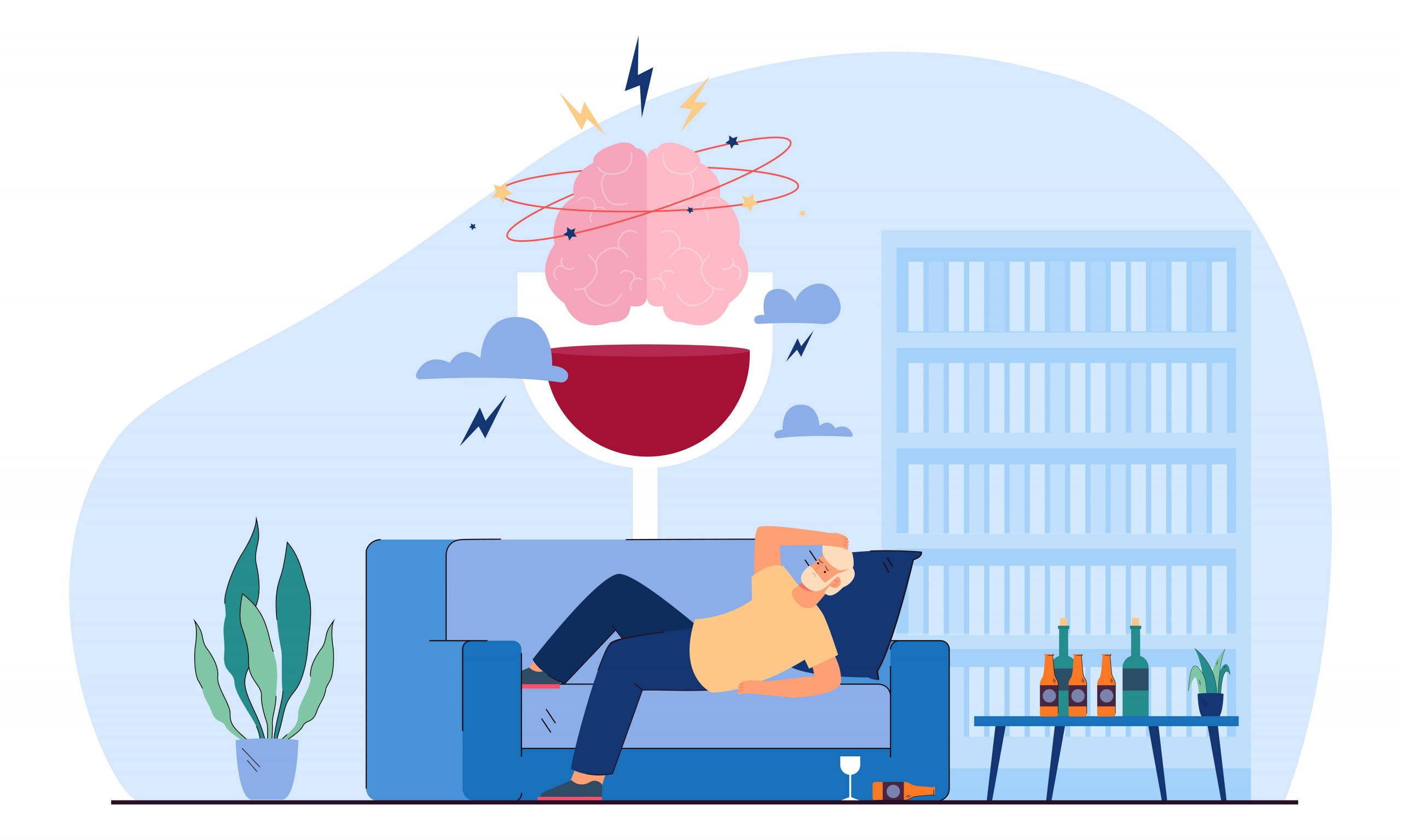
By Derek Du Chesne, Founder of Better U
January has a way of asking harder questions than we expect.
For many people in our community, especially here in West Hollywood, the New Year feels like a lot more than just a reset. It feels like a pause after intensity. After nights filled with music, movement, connection, and release. And sometimes, after months or years of quietly holding things together.
When the noise settles, a more vulnerable question often emerges:
Am I actually healing and progressing in my life or just suriving?
I’ve spent years working in mental healthcare, and I founded Better U after watching too many people (particularly LGBTQ+ individuals here in WeHo) do everything they were told to do and still feel stuck. Therapy. Medications. Meditation. Sobriety breaks. Socializing. Self-work. All of it. Even after doing ALL THE THINGS, something deeper wasn’t shifting.
This isn’t a failure of trying; it’s actually often a mismatch between what you need and the kind of care that’s been available to you.
From Party Culture to Nervous System Care
Nightlife has never been just about partying.
Historically, it has been a refuge, resistance, and chosen family – spaces where safety, visibility, and connection were possible when they weren’t elsewhere. Substances, for many, became part of that ecosystem not out of recklessness, but out of a very real need to manage anxiety, soften hypervigilance, or feel at ease in one’s own body.
There’s no moral judgment in that reality.
But coping mechanisms (no matter how understandable) can eventually stop working. What once offered relief can quietly become a ceiling.
More and more LGBTQ+ adults are asking a different question now:
What’s actually underneath this and how do I heal it without losing myself?
Alcohol, Sobriety, and Shame-Free Support
Alcohol occupies a complicated space in queer culture. For some, it’s celebratory. For others, it becomes a tool for regulation – helping manage stress, social anxiety, sleep, or emotional pain.
What’s less widely known is that there are FDA-approved medical treatments that can help people reduce or quit drinking! Without rehab, ultimatums, or shame. When paired with psychiatric care and emotional support, these options can offer relief rather than punishment.
At Better U, we work with people who are sober, sober-curious, or simply exhausted by their relationship with alcohol. The goal isn’t labeling, it’s giving the nervous system another option besides numbing or white-knuckling through it.
For many people, especially here in WeHo, that alone can feel revolutionary.
Ketamine Therapy as a Different Kind of Doorway
One thing I hear often (especially from LGBTQ+ clients) is:
“I understand my trauma, but my body doesn’t.”
Talk therapy can be life-changing, but it doesn’t always reach the physiological patterns shaped by chronic stress, shame, or identity-based trauma. This is where ketamine-assisted therapy, when done responsibly, can be meaningful.
Ketamine is a legal, physician-prescribed medication with decades of medical use. In mental health settings, it has shown promise for people struggling with depression, anxiety, PTSD, and entrenched thought loops – particularly those who feel like they’ve “tried everything.”
In a clinical context, ketamine therapy isn’t about escape; it’s about interruption by loosening rigid mental patterns and creating space for new emotional experiences. Those moments only matter if they’re supported, integrated, and grounded in care.
That’s why responsible screening and structure are essential. Ketamine therapy isn’t appropriate for everyone, especially those actively misusing substances. Harm reduction means honoring recovery, not undermining it.
Why Healing at Home Matters
I hear it all the time that so many people in the queer community have learned (often unconsciously) to brace themselves in healthcare settings. Traditional systems haven’t always been safe, affirming, or informed.
Healing at home changes that dynamic.
Receiving care in one’s own space can allow people to soften instead of perform. To cry without being watched. To rest without explanation. To be fully human.
Many of our nurses, clinicians, and therapists at Better U identify as LGBTQ+, and all are trained in trauma-informed, affirming care. That representation and that intention really matter.
The Body, Hormones, and Mental Health
Mental health doesn’t exist separately from the body.
We regularly see people whose depression, anxiety, or burnout is deeply connected to hormonal changes, chronic stress physiology, or exhaustion. For some, addressing those biological layers through holistic psychiatry or hormone replacement therapy becomes a turning point.
This is especially important in healthcare, where bodies and identities don’t always fit outdated medical assumptions.
When people feel seen as whole beings (not just symptoms) healing tends to follow.
Chosen Family and the Science of Belonging
Chosen family isn’t just cultural, it’s biological!
Attachment research shows that safe, attuned relationships regulate the nervous system and reduce anxiety and depression. For many people whose families of origin may not have been affirming, chosen family can offer something profoundly reparative: consistent presence, emotional safety, and belonging without conditions.
Sometimes, healing looks less like a breakthrough and more like a quiet moment of being understood.
Beyond Resolutions
New Year’s resolutions often frame healing as self-correction. Healing tends to look different in our community. It’s less about fixing and more about reconnecting.
We often describe healing as a nonlinear arc (our core at Better U focuses on)
Heal. Grow. Love. Transcend.
Not as a mandate, but as an invitation. As this year unfolds *through sober nights out, chosen-family dinners, therapy, rest, or honest conversations, I’ll leave you with this question:
What if the most meaningful journey you take this year isn’t a party you remember, but a version of yourself you finally understand?
Depth over distraction.
Healing over hiding.
Belonging over isolation.
That’s a New Year’s ritual worth keeping.
This editorial is sponsored by Better U. For more information, head to BetterUcare.com
AIDS and HIV
From ACT UP to apps: A candid conversation with MISTR founder Tristan Schukraft
As HIV prevention ushers in a new era, Schukraft reflects on the evolution of sexual healthcare and the power of stigma-free prevention
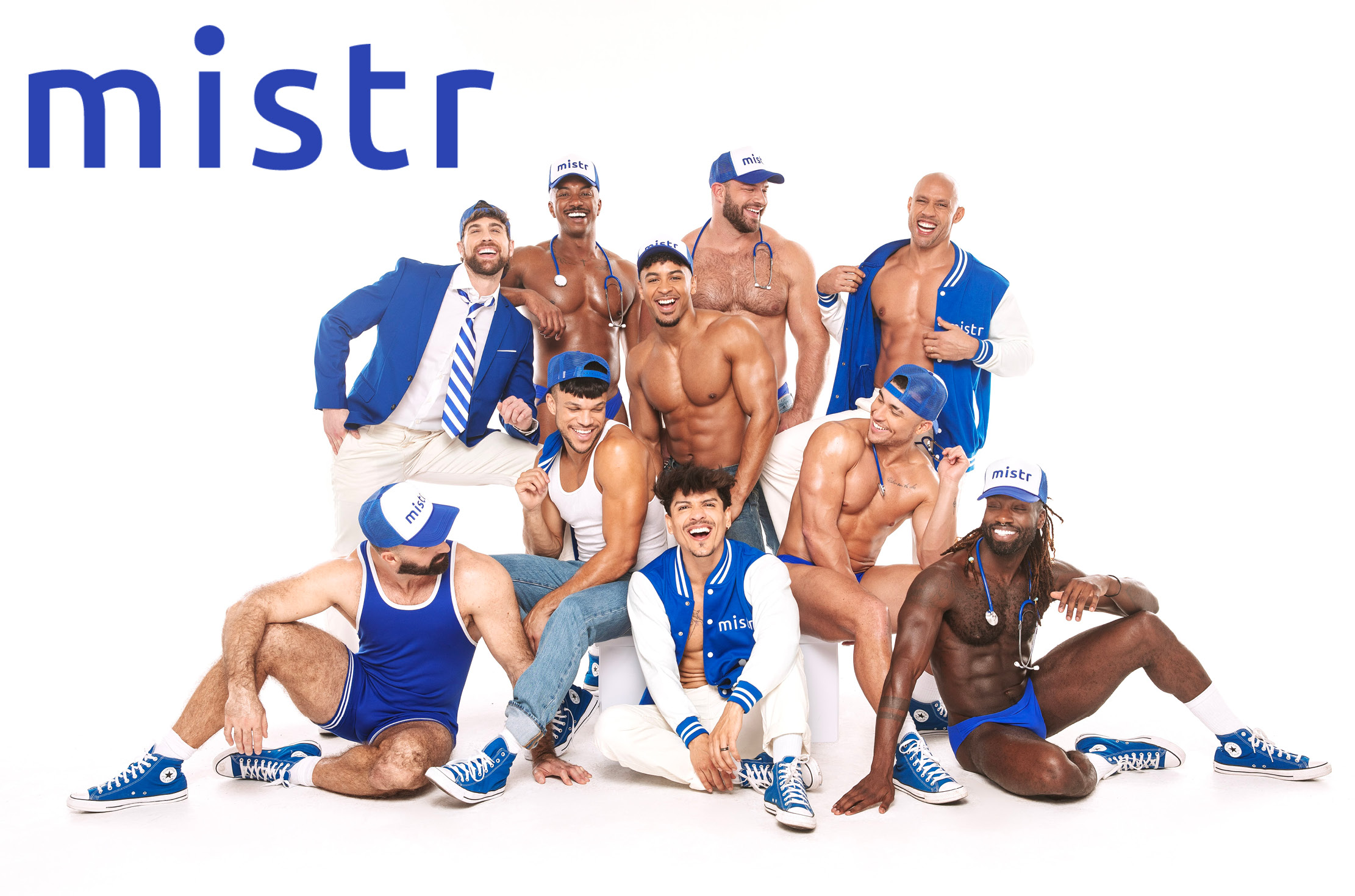
It was not too long ago that an HIV diagnosis was read as a death sentence. In its earlier decades, the HIV/AIDS crisis was synonymous with fear and loss, steeped in stigma. Over recent years, open conversation and science have come together to combat this stigma while proactively paving the way for life-saving treatments and preventive measures like PrEP. Now, in 2026, with discreet and modern platforms that meet people where they’re at in their lives, HIV prevention has evolved from hushed words of warning into something far more sex-positive and accessible. Game-changing services like MISTR are a testament to this shift, showing our community that healthcare doesn’t have to feel clinical or shaming to work. It can be empowering and, dare I say, celebratory.
Few people embody this evolution quite like Tristan Schukraft, founder of MISTR. With one hand in healthcare and the other high-fiving through queer nightlife, Schukraft gets that, from the bar to the bedroom and beyond, prevention happens in person and in real life. His approach has helped turn PrEP, DoxyPEP, and testing into normalized parts of our daily queer life, reaching hundreds of thousands of people across the US.
In our conversation, Schukraft shares candidly about stigma, policy, and why the future of sexual health depends on keeping it real.
You have one hand in healthcare and the other in nightlife and queer spaces. Can you share with us how these two spheres impact and inform each other? How do they impact and inform you?
Honestly, for me, they’ve never been separate. Nightlife and queer spaces are where people meet, date, hook up, fall in love, and make friends. That’s real life. Being in queer spaces all the time keeps me grounded and reminds me who we’re building MISTR for.
MISTR markets sexual health in a sex-positive, stigma-free fashion. Can you share with us how you measure the impact of this approach?
This year, we held the first-ever National PrEP Day. Dua Lipa performed, and Cardi B was there. After the event, Cardi B went on her Instagram live to encourage people to sign up for PrEP.
When you make sexual health stigma-free and sex positive, people talk about it. We see it in how people use the platform. When 700,000 people are willing to sign up, get tested, start PrEP, and add things like DoxyPEP, that tells us we’ve made it feel safe and normal instead of scary or awkward. And then we see it in the results. Since we expanded DoxyPEP, STI positivity among our patients dropped by half.
How have you seen the conversation of sexual health in our LGBTQ+ community change in mainstream culture in recent years?
Ten years ago, nobody was casually talking about PrEP, and if they did, it likely referenced one being a Truvada whore. Now it’s part of the culture. Popstars like Troye Sivan post pictures of their daily PrEP pill on social media. Cardi B goes on Instagram Live telling people to get on PrEP.
For many sexually active gay men, taking PrEP is simply part of the gay experience. For people in more remote areas, it might not be as talked about. Particularly in rural or more conservative places, MISTR can be a life-changing option. No awkward visits to the family doctor or the local pharmacy where everybody knows your business. It’s all done discreetly online and shipped straight to your door.
You have publicly argued that cuts to government HIV prevention funding are of high risk. Would you please elaborate for us on what those budget decisions mean on an individual level?
It means real people fall through the cracks. Someone doesn’t get tested. Someone waits too long to start PrEP. Someone finds out they’re HIV-positive later than they should have. Community clinics will be the hardest hit, especially those in underserved communities. The good news is that MISTR is ready to help people who might lose their access to care. All you need to do is sign up at mistr.com, and it’s totally free with or without insurance.
From your (and MISTR’s) perspective, how do these funding cuts threaten ongoing efforts to end the HIV epidemic?
For the first time, we have all the tools to end HIV. If everybody who is HIV negative is taking PrEP and everyone HIV+ is virally suppressed, we can end all new HIV transmissions in the United States. We have everything we need today. All we need is to get more people on PrEP. Cutting funding risks losing that momentum. Ending HIV requires scale and consistency. Every time funding gets cut, you lose momentum, trust, and infrastructure, and rebuilding that takes years.
HIV transmissions don’t pause because budgets change.
In our current climate of decreased federal investment, what role do you feel private healthcare and business should play in sexual health?
With reports that the current administration is considering cuts to HIV and prevention funding, we face a moment of reckoning. At the same time, some employers are seeking to exclude PrEP and HIV prevention from their coverage on religious freedom grounds. If these challenges succeed, and if federal funding is slashed, the consequences for public health will be devastating. But this is where the private sector must step up to fill the gap, bridge divides, and deliver results.
Businesses have the power and platform to normalize HIV prevention and drive measurable outcomes. At MISTR, we see firsthand what’s possible: since introducing DoxyPEP, STI positivity rates among our patients have been cut in half. But it’s not just about medication. It’s about messaging.
Our sex-positive, stigma-free marketing speaks directly to our community, making sexual health part of everyday life. No awkward doctor visits, no needles, no paperwork — just free online PrEP and STI testing, prescribed by real physicians and delivered to your door. That kind of impact could grow exponentially if more employers embraced this approach and made HIV prevention part of their employee wellness programs.
Employers, this is your call to action. Start by making sure your health plans cover PrEP and DoxyPEP. Partner with platforms like MISTR to give employees private, stigma-free access to care. Offer on-site testing. Talk openly about sexual health, not just during Pride, but every day of the year. This is not political — this is about protecting lives, strengthening communities, and building a healthier, more productive workforce. Because healthy employees aren’t just good for public health — they’re good for business.
When the private sector steps up, outcomes improve. And when businesses align with platforms like MISTR, scaling impact isn’t just possible — it’s happening.
Has MISTR experienced any direct effects from these recent shifts in public health funding?
MISTR’s unique model is totally free for patients with or without insurance, and we don’t cost the government or taxpayers a penny. We are scaling up our efforts to reach people who might be losing their access or care.
What would be your message to policymakers who are considering further cuts to HIV/AIDS programs?
During his first term, President Donald Trump committed unprecedented resources to the Ending the HIV Epidemic initiative here at home. Bipartisan support has shown what’s possible when bold leadership meets smart strategy. To policymakers: I urge you to reconsider any cuts to HIV prevention funding. This is not the time to pull back. It’s the time to push forward. Ending HIV is within reach — but only if government, private industry, and community organizations stand together.
What is one perhaps overlooked win from last year that impacted you on a personal level?
Seeing our STI positivity rate drop by half after expanding DoxyPEP.
Looking at the year ahead, what are MISTR’s most significant priorities for sexual health in 2026?
Expanding access, especially in the South and in communities that still get left out. Rolling out injectable PrEP. And just continuing to make sexual healthcare easier and more normal.
Is MISTR planning to integrate injectable PrEP into the mix?
Yes, absolutely. Long-acting PrEP is a game-changer, especially for people who struggle with daily pills. We’re rolling it out through a hybrid model: telehealth plus in-person injections in key LGBTQ+ neighborhoods.
As you just mentioned, MISTR reported cutting STI positivity rates in half through expanded DoxyPEP access last year (mad props). What do you think allowed you to accomplish this?
We made it easy, normalized it, and bundled it into care. No stigma, no hoops, no lectures. When you remove friction, people take care of themselves.
If you could eliminate from our collective consciousness one particular myth or stigma about sexual health, what would it be?
Sexual health should be talked about in the open, and we can have fun with it! I threw a party in October for National PrEP Day. How many parties have you been to celebrating sexual health? You should go to more.
What were the most significant obstacles or setbacks you saw some of your patients face in accessing PrEP and STI prevention services in the recent past?
Stigma, paperwork, insurance, provider judgment, and just navigating a system that was never designed for them.
Looking at the next chapter, what would you like to see MISTR accomplish next? And I have to ask, what’s next for you?
For MISTR: scale, injectables, and getting more HIV+ utilizing MISTR long-term HIV care. I started MISTR with the goal of ending HIV, so this year, next year, and as long as it takes, I want to make history and end HIV.
For me: staying close to the community, building things that matter, and making sure we never lose sight of the humans behind the metrics.
For more information, head to HeyMistr.com.
This article is part of LA Blade’s January health series.
COMMENTARY
If you’re exhausted from dating in 2025, this is how you restart for 2026
What are you going to do differently this year?

If you ended last year feeling like you’ve dated everyone, tried everything, and there’s no one left, I want you to pause for a second because that feeling is incredibly common, especially for gay men.
So let me ask you something, honestly.
What are you going to do differently this year?
Are you just going to get back on the apps again?
Back on Grindr.
Back to the same bars.
Same patterns. Same guys. Same conversations.
And hope somehow this year turns out better?
If you change nothing, nothing changes.
A lot of men I talk to are stuck in this back and forth. Do I want a relationship, or do I just want something casual? Am I ready? Is the timing right? Should I focus on dating or my career? Do I have enough money saved? Am I far enough along in life?
That constant indecision keeps you stuck right where you are.
Then we pile on old rejection, trauma from growing up gay, low self-esteem, and suddenly we start believing we need someone hotter than us, richer than us, more put together than us to feel chosen.
But here’s the part I want you to really hear.
You don’t fall in love with a checklist.
You fall in love with how someone makes you feel.
Do they make you feel safe?
Do you feel calm around them?
Do you feel seen?
Do you laugh together?
Do you feel good being yourself?
That’s what actually builds connection.
Money doesn’t do that.
Abs don’t do that.
A job title doesn’t do that.
Those things can change. They come and go.
So here’s where I’m going to point the finger back to you, in a loving way.
If you’re clear on the kind of man you want, what are you doing to become closer to that person yourself?
If you want someone kind and generous, how are you practicing kindness and generosity in your daily life? Do you volunteer? Do you compliment the person standing next to you even when there’s no attraction? Do you lead with warmth or with judgment?
If you want someone who values family, how much time are you actually spending with yours? Do you prioritize relationships the way you want someone else to?
If you want someone with a full life, hobbies, passions, and friends, what does your life look like right now? Are you doing the things you say you want to do, or are you sitting on the couch thinking about them? You want to play piano. Travel. Hike. Be more active. What steps are you taking to actually live that life?
If you want someone active and adventurous, are you active and adventurous? If you want someone calm, grounded, and emotionally steady, how are you working on becoming grounded yourself? Do you meditate? Do yoga? Take some quiet time? Do anything that regulates your nervous system?
How about finding someone with an amazing body? How does your body look? Are you working out and eating well yourself?
By the way, you can always help your partner get into healthier habits if you are practicing them yourself.
This isn’t about perfection. It’s about alignment.
If you’re expecting someone to check every box while you’re not checking those boxes yourself, that’s not standards. That’s unrealistic expectations.
And remember, our dating pool is already small. Roughly four percent of the male population identifies as gay, bi, queer, or trans. Cut that down to people who are single. Then emotionally available. Then compatible. Then sexually compatible.
The number gets smaller fast.
So maybe this year we stop being so rigid.
Maybe we loosen the rules a little.
Maybe we focus less on the perfect body and more on the right energy.
Chemistry usually doesn’t show up on the first date. Most of the time it doesn’t. So if there’s even just a little attraction, kindness, and curiosity, maybe give it a second date. Maybe slow down long enough to actually see who’s in front of you.
Doing the same thing over and over is not dating. It’s just repeating patterns.
Dating with intention means being honest with yourself first.
If this year you’re ready to stop guessing, stop burning out on apps, and actually have a plan, matchmaking can help. You don’t need more options. You need clarity, accountability, and guidance from someone who understands queer dating and knows how to help you show up as your best self. If you’re serious about doing things differently this year, that’s where matchmaking comes in. Click here and let’s start 2025 right.
Daniel Cooley is a gay matchmaker & co-owner of Best Man Matchmaking – California’s premier service for queer and trans men seeking emotional connections. Learn more here.
Recovery
Sobriety isn’t a punishment, it’s a power move
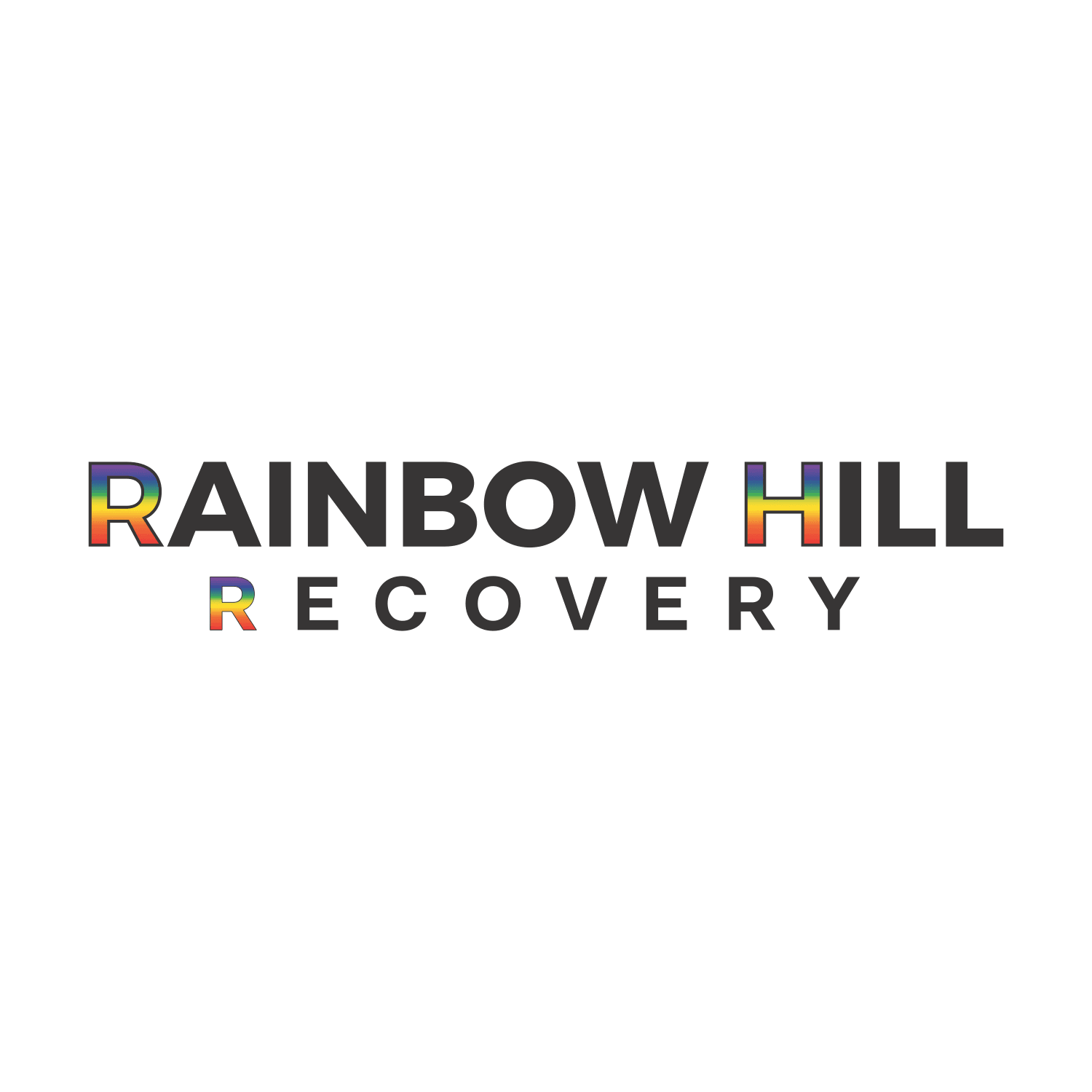
Every January, we’re sold the same tired story: new year, new you. As if who you were before January 1st was somehow broken. For queer people especially, that narrative can feel heavy. We’ve spent enough of our lives being told to fix ourselves.
Sobriety, when done right, isn’t about deprivation or perfection. It’s not about becoming boring, rigid, or suddenly obsessed with green juice. It’s about alignment. It’s about creating a life that actually supports who you are, not just who you survive as.
For a lot of us, substances weren’t the problem. They were the solution we had available at the time. They helped us cope with rejection, trauma, loneliness, or the pressure to perform in spaces that weren’t built with us in mind. So when we talk about incorporating sobriety into a healthy lifestyle, the conversation has to start with compassion, not shame.
A healthy, sober lifestyle doesn’t mean waking up at 5 a.m. to meditate and journal for an hour. It means learning how to listen to your body again. It means asking yourself simple but radical questions: Do I feel safe? Am I rested? Am I connected? For many people, sobriety creates the space to finally hear those answers.
One of the biggest myths about sobriety is that it shrinks your world. In reality, it expands it. You start showing up to things as yourself, not numbed, not performing, not dissociating through the night. Relationships get clearer. Boundaries get stronger. Joy feels sharper. So does grief. And that’s okay. Feeling is the point.
In queer spaces, alcohol and drugs are often woven into the community. Bars were sanctuaries long before we had other places to gather. Sobriety doesn’t mean you’re rejecting your community. It means you’re redefining how you want to participate in it. Maybe that looks like dancing without drinking. Maybe it looks like finding new spaces altogether. Maybe it looks like leaving earlier and going home, proud of yourself.
Incorporating sobriety into a healthy lifestyle also means letting go of all-or-nothing thinking. You don’t have to have it all figured out on January 1st. You don’t need a label. You don’t need to explain yourself to anyone. You’re allowed to be curious. You’re allowed to try. You’re allowed to change your mind and try again.
The New Year doesn’t have to be about becoming someone else. It can be about becoming more you. More present. More grounded. More honest about what actually supports your mental health, your relationships, and your future.
Sobriety isn’t a finish line. It’s a relationship with yourself, your body, and your life. And like any healthy relationship, it requires patience, grace, and room to grow.
If you’re considering sobriety this year, know this: you’re not behind, broken, or late to anything. You’re right on time. And choosing clarity, care, and self-respect isn’t a restriction.
It’s freedom.
Joey Bachrach is the Co-Founder and Chief Executive Officer of Rainbow Hill Recovery, an LGBTQ-affirming mental health and substance use treatment center based in Los Angeles. For more information, head to RainbowHillRecovery.com.
Health
Surviving the chaos: A grounding guide for the LGBTQ community
This is not the LGBTQ community’s first crisis. We have survived criminalization, moral panics, epidemics, and abandonment—and we survived by acting.
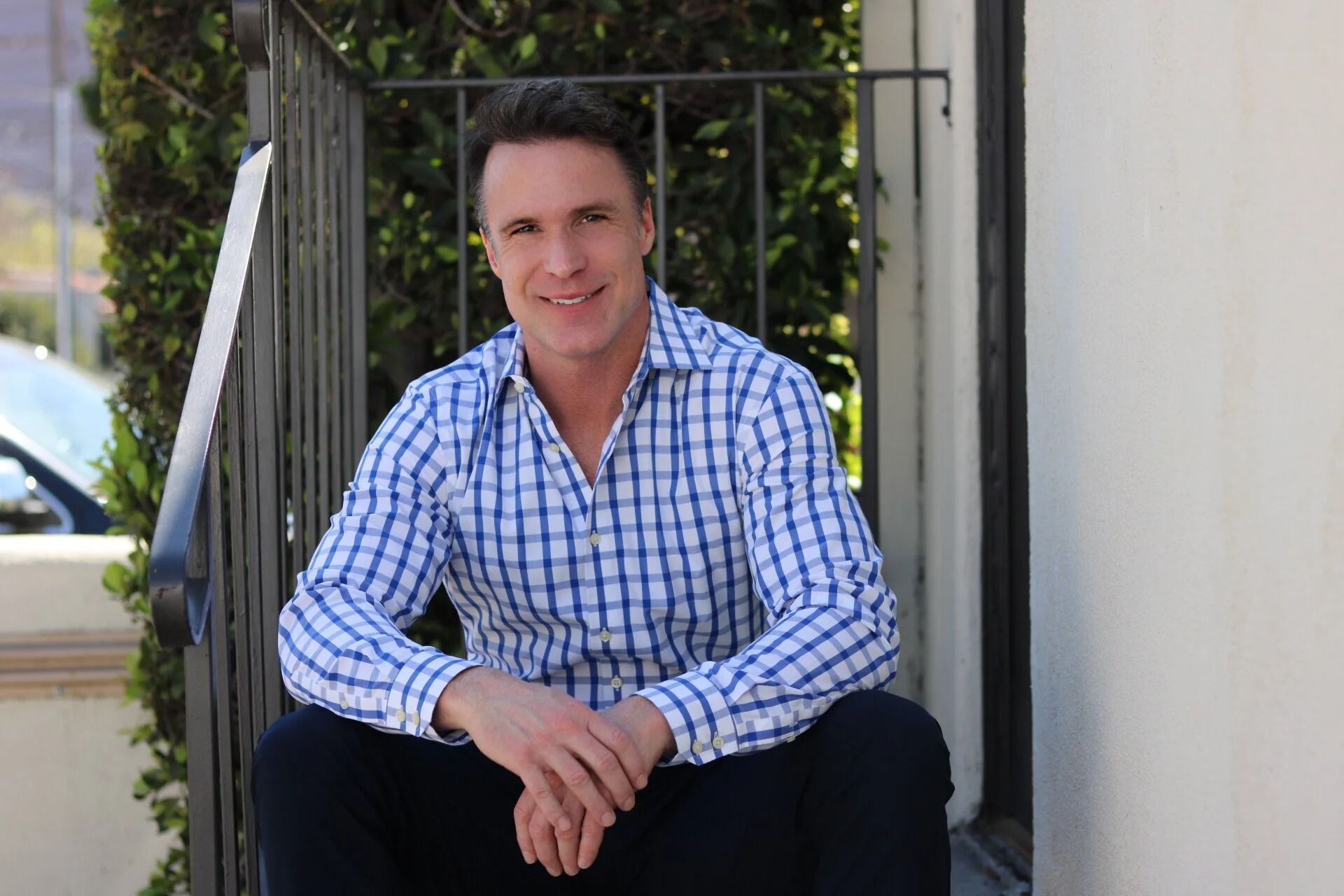
The other day, I went to see my doctor—who is gay—for a routine check-up. He asked how I was doing. I said, “Pretty good, considering.” No elaboration needed. No footnotes. No PowerPoint. He nodded and said, “Who would have thought twelve months ago we’d be watching our world fall apart and still going to work the next day?”
Exactly.
That single sentence captures a trauma response perfectly. When things become overwhelming, most of us don’t collapse dramatically onto a fainting couch. We get dressed, show up, answer emails, and dissociate just enough to function. This is not denial. It’s survival. And usually, it’s adaptive.
But this time feels different. The stress isn’t isolated. It’s collective. The LGBTQ community is feeling it—and so are many others. By some estimates, at least half the country feels impacted. When that many people are on edge, the nervous system never really gets a break.
What’s Actually Happening (And Why You Feel Like You’re Losing It)
Over the past year, political hostility has triggered a chronic threat response—hypervigilance, rumination, and emotional exhaustion—especially in communities without the protection of wealth or power. We hear it on the news, see it on social media, and feel it in casual conversations. The nervous system doesn’t distinguish between rhetoric and reality very well. Threatening language alone is enough to activate fear, even when you are not in immediate danger.
That constant activation shows up as anxiety, depression, irritability, emotional numbing, or a creeping sense of shame about who you are. These are not signs that something is wrong with you. They are signs that your brain is doing exactly what it evolved to do: protect you.
Most of us are feeling it. Well, almost all of us. Nicki Minaj, for example, appears delighted with what’s happening politically. Less delighted, perhaps, by fans unfollowing her and adding her name to a deportation petition. But I digress.
Here’s the reality: if you’re not rich or powerful, your direct influence can feel limited. Outside of voting every couple of years, people grab whatever sense of agency they can—attending rallies, wearing a “No Kings” shirt, signing petitions, posting, sharing, speaking up. None of that is pointless. Small actions remind us we are not helpless.
Fear is The Goal
What is harmful is staying in a constant state of rage and fear. That is the goal of authoritarian systems. Fear is the primary tool used to control populations. Supporters are taught to fear the “other.” Opponents are taught to fear the consequences of speaking up. Fear hijacks the brain. When fear is in charge, critical thinking goes offline. Rage-baiting media, vengeful politicians, aggressive enforcement, and spineless institutions all benefit from keeping you dysregulated.
How to Calm Yourself Down (Without Pretending Everything Is Fine)
1. Regulate your nervous system using T.I.P. skills:
- Temperature: Change your body temperature. Cold water on your neck, a hot shower, or holding a warm mug while breathing slowly can interrupt panic.
- Intensity: Move your body. Walk, run, dance, work out, scream at a rally—burn off excess adrenaline instead of letting it rot inside you.
- Pressure: Ground yourself physically. Feel your feet on the floor, press your arms into your chair, do a wall sit, squeeze something, or hug someone safe.
2. Change your thoughts:
- Shift from catastrophic thinking (“Everything is collapsing”) to probability-based thinking (“Things are bad, but people are organizing and pushing back”).
- Replace overgeneralization (“Nowhere is safe”) with localized reality checks (“Some places feel unsafe, but I am okay right now”).
3. Change your relationship with your thoughts:
- Try mindfulness, meditation, or slow breathing with music.
- If sitting still makes you want to crawl out of your skin, try active meditation—washing dishes, gardening, walking—while focusing on the task and letting thoughts pass.
Remember Who You Are
You are not how you are being treated. Politicians, masked officials, and hateful online trolls want you to internalize shame and retreat. Their cruelty says nothing about your worth. Anchor yourself in your values—love, integrity, family, community—and invest in the relationships that keep you grounded.
Don’t Give Up. Don’t Give In. Do Something (But Not Everything)
This is not the LGBTQ community’s first crisis. We have survived criminalization, moral panics, epidemics, and abandonment—and we survived by acting.
Vote. Get involved in a campaign. Write, sing, organize, cook, care for someone. No one can do everything—but everyone can do something.
It may get worse before it gets better. But it will get better when we choose action, connection, and meaning over fear and endless rage-scrolling.
Dr. Greg Cason is an expert in cognitive behavioral therapy with over twenty years of experience. Check out DrGregCason.com for more information.
This article is part of LA Blade’s January health series.
Commentary
Trump’s triple X testosterone crusade to capture the Western Hemisphere
Veteran journalist and LGBTQ+ ally Lucian Truscott IV analyzes Trump and the Venezuela invasion

No one’s talking about Donald Trump’s small hands now or his low poll numbers or affordability failures or the 5.2 million unreleased Epstein files or the testimony of former Trump Special Counsel Jack Smith on the 5th anniversary of the Jan. 6 insurrection – not after the U.S. unleashed a surprise shock and awe bombing campaign in Venezuela on Friday night, Jan. 2. With great military precision, the United States successfully kidnapped Venezuelan President Nicolás Maduro and his wife Cilia Flores without the loss of any American lives.
Apparently, the 80 people who were killed – including civilians, Cuban nationals, and some Venezuelan military –are insignificant collateral damage.
A moment after the decapitation of leadership settled in, some Venezuelans celebrated the end of Maduro’s brutal reign of power. But Trump swiftly snatched away joy, announcing that “we are going to run the country,” along with Maduro’s former vice president, who was threatened into accepting the interim presidency to stabilize the transition to whatever Trump wants next in this sovereign country and to facilitate oil transactions. There is some confusion about the loyalty of the rest of the intact Maduro regime and the reaction from opposition activists.
What does that mean for someone like Andry José Hernández Romero, the gay stylist who fled Venezuela after being persecuted for his sexual orientation and open opposition to Maduro? Though he complied with all requirements to seek asylum in the US, he was arrested and, without due process, was deported with 250 other Venezuelans to the horrendous torture prison CECOT in El Salvador, where he suffered daily assaults and abuses.
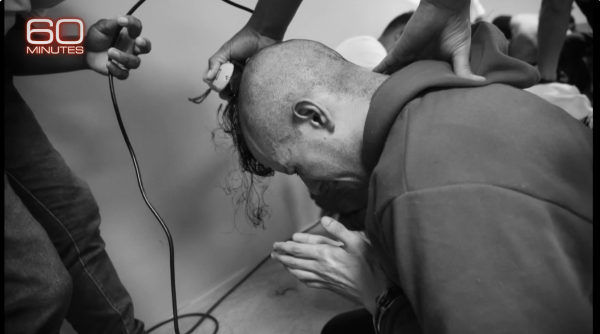
“We were lied to by ICE officials and then greeted in CECOT with beatings,” said Romero after he was sent home. “At every step of the way, they abused us. But being Venezuelan is not a crime. I’m grateful to Congressman Takano who has called for justice for the 252 Venezuelan men sent to CECOT without the opportunity to present their case in immigration court.” Questions about how and why so many amoral violations of due process took place are still on hold.
Trump’s second term is all about toxic performance masculinity, and following up bellicose bluster with actual brute force. Secretary of Defense Pete Hegseth’s Pentagon has murdered more than 100 people aboard alleged drug smuggling boats blown up by drones as if in a video game. The UN calls the killings “extrajudicial executions” since the US has produced no evidence or allowed due process to contest the claims that the boats were hauling fentanyl for distribution in the United States.
Oddly, the Pentagon has not released video of the blowing up of two survivors of a strike, clinging to a piece of wood for 45 minutes before they, too, were blown up Sept. 2 by a plane they apparently thought might rescue them.
It’s all about the drugs, say Trump acolytes, as if that balances out the inhumanity. Attorney General Pam Bondi provided a new 25-page indictment charging Maduro with heading a transnational narco-terrorist organization along with his wife and son. Secretary of State Marco Rubio, who has been pushing for regime change in Venezuela, described the attack as a “law enforcement” operation, without the need for Congressional advice and consent.
But the US indictment against Maduro cites cocaine, not fentanyl, which is “almost entirely produced in Mexico using chemicals from China,” according to U.S. authorities. “Venezuela plays no known role in its trade, nor does any other South American country,” the New York Times reports.
Venezuela is a pass-through country for cocaine. Meanwhile, in 2022, the U.S. attorney’s office for the Southern District of New York charged ex-Honduran President Juan Orlando Hernández with “one of the largest and most violent drug-trafficking conspiracies in the world,” responsible for the “unfathomable destruction” cocaine had caused in the United States.
Hernández was abruptly pardoned by Trump last month. “The man that I pardoned was, if you could equate it to us, he was treated like the Biden administration treated a man named Trump,” Trump told The Times, adding, “This was a man who was persecuted very unfairly. He was the head of the country.”
Trump seems addicted to unabashed lying. The Washington Post Fact Checker team found that Trump’s false or misleading claims totaled 30,573 over his first four years in office, “averaging about 21 erroneous claims a day.” On July 07, 2025, Yale experts released their findings on Trump’s claims or assertions. “Artificial intelligence discredited all the Trump claims we presented, fact-checking the president with startling accuracy and objective rigor,” they reported.

Trump demands that loyalists buy into his lies and bellicosity – including the latest, claiming Western Hemisphere domination. Rubio is salivating over destroying Cuba, as giddy as when he dreamed of besting his GOP rival in 2016.
“He is taller than me, he’s like 6’ 2”, which is why I don’t understand why his hands are the size of someone who is 5’ 2”,’ Rubio joked. “Have you seen his hands? And you know what they say about men with small hands – You can’t trust them,” ABC News reported.
Trump flipped the script on this manhood vulnerability, convincing the crowd they weren’t seeing what they were seeing. “Are they small hands? And he referred to my hands — if they are small, something else must be small. I guarantee you there is no problem. I guarantee you.” (Fact check: porn star Stormy Daniels says Trump’s penis is like “a toadstool.”)
Remember those small hands when Trump talks about going into a sovereign country to get oil, or Deputy Chief of Staff Stephen Miller talks about annexing the Danish territory of Greenland. There’s a smirky sexual overcompensation infused with the presumption of power.

“We live in a world in which you can talk all you want about international niceties and everything else, but we live in a world, in the real world, Jake, that is governed by strength, that is governed by force, that is governed by power,” Miller told CNN’s Jake Tapper on Monday. “These are the iron laws of the world since the beginning of time.”
Sounds like Trump’s reply to E. Jean Carroll’s out lawyer Roberta Kaplan during his 2023 deposition.
From CNN transcript:
KAPLAN: And you say – and again this has become very famous – in this video, “I just start kissing them. It’s like a magnet. Just kiss. I don’t even wait. And when you’re a star, they let you do it. You can do anything. Grab them by the p*ssy. You can do anything.” That’s what you said. Correct?
TRUMP: Well, historically, that’s true with stars.
KAPLAN: It’s true with stars that they can grab women by the p*ssy?
TRUMP: Well, that’s what, if you look over the last million years I guess that’s been largely true. Not always, but largely true. Unfortunately or fortunately.
KAPLAN: And you consider yourself to be a star?
TRUMP: I think you can say that. Yeah.”
Grabbing Venezuela’s oil or Greenland’s potential wealth of critical minerals is the rape of someone else’s land. As Trump’s testosterone-related lawsuits suggest, he’ll need a lot of money and backup to get away with it.
I called my friend Tom Carpenter, an attorney and Marine Corps Captain and Naval Academy graduate who chaired Servicemembers Legal Defense Network, for his thoughts on what’s happening – might there be a draft to cover all the invasions Trump’s threatened? Tom said he’s following his friend – West Point Academy graduate Lucian K. Truscott IV – a straight man in the alum’s gay Knight’s Out association – whose Substack is erudite, illuminating, and funny.
Case in point: “Boy, are the think tank and media foreign policy poohbahs stumped after Trump’s big kidnapping of Mr. and Mrs. Maduro on Friday night. All of them agree that it was a brilliant military operation, which Secretary of State Marco Rubio insists on calling a law enforcement ‘mission in support of the Department of Justice.’ Which I guess isn’t that far-fetched a description, given the fact that we have platoons of armed, uniformed men in full combat gear running around our own country conducting Gestapo-like law enforcement missions on unsuspecting people, immigrant and citizen alike, as they go about their business of living peaceful lives in the United States of America.”

In Trump’s plan for Venezuela: A hope, a prayer, and golf, Lucian also noted in a White House photo that a waiter stood behind Trump, Rubio, and CIA Director John Ratcliffe in a makeshift ballroom/sit-room watching the assault. “Trump couldn’t inform Congress, but if you were a Mar-a-Lago waiter on Friday night, you knew everything that was happening in Venezuela in real time.”
Lucian comes from a long line of Army heroes: his father was an Army colonel who served in Korea and Vietnam; his grandfather, Lucian Jr., was a U.S. Army general during World War II, commanding the 3rd Infantry Division and later the Fifth Army in Italy. Lucian attended West Point, graduating in 1969, but not before causing some “good trouble,” which we discuss in our Zoom conversation.

A journalist and author, one of his books, Dress Gray, is about the murder of a gay cadet. In 1986, it was adapted for the screen by Gore Vidal and made into a TV miniseries that aired on NBC March 9–10,1986.
Lucian is also a descendant of American Founding Father Thomas Jefferson and created some controversy by inviting the descendants of Jefferson’s enslaved mistress, Sally Hemings, to a 2000 family reunion.
But among LGBTQ+ historians, Lucian is perhaps best known as the first eyewitness reporter, along with gay columnist Howard Smith, his colleague at the Village Voice, to cover the riots at the Stonewall Inn, published July 3, 1969.

“Sheridan Square this weekend looked like something from a William Burroughs novel as the sudden specter of ‘gay power’ erected its brazen head and spat out a fairy tale the likes of which the area has never seen,” Lucian wrote, opening a very detailed account, laced with words like “faggot” and “dyke,” commonly used language at the time. Lucian later wrote that a protest led by Jim Fouratt over the slurs prompted Lucian and the Village Voice to change their language.
Importantly, Lucian writes with specificity about that night on June 28, 1969 – including: “The next person to come out was a dyke, and she put up a struggle — from car to door to car again. It was at that moment that the scene became explosive. Limp wrists were forgotten. Beer cans and bottles were heaved at the windows, and a rain of coins descended on the cops.”
Two nights later, Lucian hangs out with famed gay Beat poet Allen Ginsberg. “Gay power! Isn’t that great!” Allen said. “We’re one of the largest minorities in the country — 10 percent, you know. It’s about time we did something to assert ourselves.”

Lucian accompanied Ginsberg into the Stonewall Inn, which was blaring with rock music, and later walked him home. “Along the way, he described how things used to be. ‘You know, the guys there were so beautiful — they’ve lost that wounded look that fags all had 10 years ago.’ It was the first time I had heard that crowd described as beautiful.
“We reached Cooper Square, and as Ginsberg turned to head toward home, he waved and yelled, ‘Defend the fairies!’ and bounced on across the square. He enjoyed the prospect of ‘gay power’ and is probably working on a manifesto for the movement right now. Watch out. The liberation is underway,” Lucian wrote.
In our Zoom conversation, we talked about Trump, Venezuela, how Trump’s ludicrous dreams of imperialism could defeat him, Sen. Mark Kelly, a possible draft, and so much more. I also asked Lucian why he is an LGBTQ+ ally.
“That’s the kind of thing I learned from my parents and from my mother, from my grandmother – was you disarm people with humanity. That’s what you do. If you’re a human being, act like one,” Lucian K. Truscott IV said. “And if you act like one, eventually, once you brush things and clean crap off your feet like Donald Trump – you win… So I guess my message is: it’s not going to be easy – but this, too, will pass. It will.”
It’s our job to hasten the passage.
This is a cross-post from Karen’s LGBTQ+ Freedom Fighters Substack. Please enjoy the video conversion with Lucian K. Truscott IV on the site and check out his daily Substack.
Commentary
Repeal now, regret later: Section 230 is up for elimination, and it’s not the platforms who will pay the price
As lawmakers seek to repeal Section 230, one must ask, what does this mean for adult content creators, their consumers, and the platforms that bridge the two?

Sliding in at the tail end of 2025, Congress introduced two not-so-beautiful bills that could potentially refine the internet as we know it. The House’s Sunset to Reform Section 230 Act (HR 6747) diagnoses Section 230 with 12 months or less, culling it to the afterlife on December 31 of 2026. The Senate’s companion bill, S 3546, would repeal it two years following its enactment, leaving lawmakers with this allotted amount of time to… figure something out.
For those just arriving, Section 230 is the law that allows for social networks, forums, and more to host user content with slim fear of lawsuits. To rid the internet of Section 230 is to kick its legs out from underneath it. While these lawmakers are selling this as a push for “accountability,” it will, in reality, be to the detriment of millions of adult content creators.
There is a not-so-subtle dramatic flair to Washington’s most recent idea for fixing the internet. Take one of the most foundational laws that allows it to function, and roll it back harder than my eyes are as I write this. No frou-frou amendments or considerate recalibrations necessary, just a set-in-stone expiration date to pull the plug on Section 230, leaving us to pick up the tab.
This is essentially what the proposed repeal of Section 230 of the Communications Decency Act reflects. Bills in both the House and Senate would strip Section 230 from the books in just a few years, leaving Congress and the public to figure out what is next before time runs out. Those who support it call it leverage, while others criticize it for its recklessness. However, for the countless folks whose livelihoods are tethered to their online presence, especially those in adult entertainment, it feels more like involuntarily absorbing the consequences of a political clash. Unconsidered collateral damage, even.
Since its inception, Section 230 has been seen by many as the green light of the internet, which is only a slight exaggeration. While it doesn’t protect speech itself, it does protect platforms from being seen as the legally responsible publisher of every word, image, or video posted by those who use it. Without it, the logic of the internet folds in on itself. Twitter (or X or whatever tf we’re calling it these days) would be liable for your incel-ly cousin Chad’s QAnon quips.
But beyond the blurred lines on free speech and innovation is a more bitter truth. Repealing Section 230 in no way, shape, or form primarily falls on Big Tech. It punishes the people who depend on their platforms to work, survive, and build communities – specifically, those who already find themselves cast to the margins. And, let’s be real, nowhere is that more evident than in the adult entertainment industry.
Proponents of repeal insist this is about accountability, but accountability here is just an illusion. Some argue that tech companies have skirted by on a free pass for way too long. If platforms were made liable for their users’ content, they just might begin to take damaging or offensive material seriously. This particular framing positions lawmakers as disciplinarians quelling an unruly industry fueling disorder.
The issue here is that accountability doesn’t magically manifest itself when you threaten mass liability. What does appertain is fear. When our beloved platforms fall vulnerable to the prospect of being taken to court over the content it willfully distributes, they don’t evolve into mindful moderators. Instead, inspired by panic, they drastically elevate their censorship.
This is not new. When SESTA/FOSTA carved out exceptions to Section 230 in the name of combating sex trafficking, platforms responded not with nuanced enforcement but with scorched-earth moderation. Craigslist shut down its personals section. Tumblr excommunicated adult content. Innumerable sex workers lost their income and their livelihood overnight. This was not because what they were doing was illegal, but because they were now seen as too risky – or too risque – to host. The repeal of Section 230 as a whole would take this dynamic and amplify it fivefold.
When platforms are in panic-mode, it’s those putting in the work who pay the price. Adult entertainers are far from possessing the lobbying teams and defense funds to do much about it. We’re freelancers, independent contractors, and small business owners. We rely on subscription sites, fan communities, and social media as our infrastructure.
If Section 230 peaces out, these platforms have the decision of aggressive over-moderation or calling it quits. Adult content will undoubtedly be the first to go due to its quite specific brand of stigma. Through the legal-risk lens, banning adult content entirely is more cost-efficient than bringing on and paying for additional moderators and lawyers. This results in the decimation of primary income streams for many.
It has happened before and could happen again – accounts being deleted with zero warning; years of accruing a fanbase disappearing with the update to the terms of service. Performers already live with the reality of banks refusing service and social platforms shadowbanning – and sometimes straight-up deleting – accounts. Repealing Section 230 will only compound these.
The irony of it all is that, if Section 230 is repealed, the internet will likely just become that much more dangerous, not the opposite. It is when mainstream platforms shun adult content that the content subsequently shifts over to more obscure and less regulated sites, which offer much fewer protections and even less accountability. It’s these sites that are not as concerned with data breaches, harassment, and so on. Think for a beat on Prohibition or pre-legalized marijuana. What these lawmakers are selling as morality-induced detox (or purge, rather) only leads to an underground economy that is much more at risk.
Section 230, as it is now, also allows for platforms to moderate free of the role of “publisher.” What does this mean exactly? They have the ability to block accounts and enforce community standards while counteracting digital forms of abuse. The void of this autonomy would inevitably be filled with increased and unchecked harassment and stalking, with reduced means of intervening.
And let’s be honest – when such reigns are pulled in, they do not do so evenly or fairly. Time and time again proves that it’s the marginalized communities who are the first to feel the sting (rest easy, Brazzers and Corbin Fisher). The Trans and BIPOC folks will be those caught in the first wave and many more to come.
Like any monopoly, big companies with swelling legal teams will manage just fine and usher in the new Post-Section 230 age. Smaller performer-driven platforms and sites? Well, thoughts and prayers, babes. Result: less autonomy and less coin for the performers. If the true initiative here is to check Big Tech, this is a mighty-sus way of going about doing just that.
Now, Section 230 is far from perfect. But when it comes to platforms, accountability is key. The internet is rife with trolls and worse. At the same time, although not nearly as immediate, real reform would be much more precise and much less dramatic – not to mention, less damaging.
And it’s not solely the creators who will be affected, but also their consumers (I see you). For consumers of online adult entertainment, get comfortable with a more expensive and, well, blander experience. When platforms are hit with liability, the easiest avenue they tend to choose is not to add moderation but to offer less. What would remain would be sterile, simpler, and much more controlled.
Consumers would also feel the hit in their Apple Wallet. It would be foolish to believe that corporations would absorb the legal risk. No, sir, this will be passed on to you. Fees would increase, and features would become more restrictive. In the end, we would be left with an internet under the control of a select few. Sound at all familiar?
If or when Section 230 is repealed, it would restructure who gets to work, who gets paid, and how much, and who absorbs the risk. For those in adult entertainment, income, safety, and autonomy are on the chopping block. If the goal here is to hold corporations accountable, then – and just a thought here – perhaps do not sacrifice those most vulnerable in the process. That is just bullying at its most refined.
Viewpoint
From closeted kid to LGBTQ+ journalist: queer community is my guiding light
Ponderings about my first months at the Blade and the stories shaping my reporting.

In the first week of September, I boarded an early Coast Starlight, crying quietly over a cold bagel as the train departed. It was a 12-hour trip from Emeryville to Los Angeles: plenty of time, I thought, to steep in my sadness as I left the home I had made for the last several years to start a new one in a bright, shiny city. I sat in silence, watching the sun press itself into the sea off the Santa Barbara coast, water and night parting me further and further away from my friends and community.
When I arrived at Union Station, I stood at the platform and was surprised by how warm it was at 9 p.m. A giant skyscraper towered into the sky, glaring down at me with its golden glow and millions of windows. Welcome home.
Since then, I’ve made a truce with the city. I’d always been in its orbit, having grown up in a small, suburban town northeast of it most of my life. But trips into L.A. proper were reserved for special occasions: birthday dinners in Little Tokyo at our favorite restaurant, the now-defunct Sushi Komasa. I had never ventured into the region’s vast queer gems and safe havens: places that I’m sure would have provided me assurance that it was okay to have crushes on people who weren’t boys (or to not have crushes at all!).
As a computer kid, I subsisted on brief explorations on YouTube or clicking through various fanfiction forums. My queerness existed in the gay kiss scene of Cruel Intentions, reigniting with each press of the “play” button and shelved away when the tab closed. I operated like this for years, burying my desires and performing diligent, dependable elder child during the day.
Today, I’m a community reporter at a proudly LGBTQ+ news outlet, where I get to spend most days with other queer folks, listening to their stories and trying to document their lives.
In the last few months, I’ve attended parties, press conferences, community gatherings and rallies that center the liberation of queer folks, specifically those who are multiply marginalized. I’ve spoken with strong leaders and advocates for the TGI movement, who fiercely advocate on a daily basis for greater protections for transgender, gender nonconforming, and intersex people.
One of my most joyous reporting moments at the Blade includes attending the Los Angeles LGBT Center’s annual Queerceañera: where beloved drag diva Lushious Massacr floated across a stage, embraced by the love of her community as she celebrated and reclaimed the coming-of-age ceremony. With queer joy and communal love, she transformed into a beautiful, cascading butterfly on the precipice of flight.
I also attended a transformative HIV/AIDS art exhibition curated by Anuradha Vikram, where a small gallery morphed into a living archive of revolutionary activism spearheaded during the HIV/AIDS epidemic of the 1980s. The intersections of history and art, and the unity amongst various queer people during this period, were truly inspiring to witness. Speaking with Vikram was instrumental in my early days at the Blade, and our conversation made me think critically about the ways queer activism has shifted dramatically in the decades since the HIV/AIDS epidemic.
How are young, queer people channeling their activism today? This is a question that continues to power my work as I report on our communities.
Another valuable and crucial experience I had while working at the Blade was on World AIDS Day, where I covered a reading by the APLA Health writers group. Dozens of us stood by the pillars of West Hollywood’s AIDS monument and listened to the beautiful, moving prose of several writers who all had personal ties to the HIV/AIDS crisis of the 80s. I still think about John Boucher’s gorgeously crafted, heart-wrenching story.
“I remember Rex coming through our front door after a trip, coming home from work, or at 2:30 in the morning after the bars had closed and he’d finished singing karaoke. As the black lacquer door opened into the goldfish-colored room, he’d sing: ‘Hello apartment,’ Boucher read. “He was greeting our life. His tenor voice was clear and true, his eyes the color of cornflower blue against the pinkish orange sunset of our living room. This is home.”
These stories, rendered through the heartfelt voices of the people around me, remind me of the importance of this work. I struggled with my identity for most of my adolescence and early adulthood, and only began to really accept and understand myself around four years ago, when I began to develop blossoming friendships with queer people who were unabashed about their art, their euphoria, their juicy crushes. Their visibility and their joy, which became our shared visibility and joy, guide me in my most difficult moments.
This year, I suffered the tremendous loss of a dear friend who was a blazing, warm light for her community. She was a poet and artist who was outspoken in her activism and in her bold self-expression. She rejected shame with every fiber of her effervescent being and advocated for the protection of fellow trans women, disabled people, and queer people of color. Her loss is one I will carry with me forever, and anchors me in my work.
My work is for Mercedez, my queer AAPI siblings, queer youth, queer immigrants, queer disabled people, and everyone else who exists on our vast spectrum.
LGBTQ+ Youth Mental Health
Law expanding mental health resources for LGBTQ+ youth has gone under effect
Beginning Jan. 1, AB 727 amplifies resources for queer students in California.

On Wednesday, Governor Newsom announced in a press release that a number of key statewide laws would take effect on New Year’s Day. One of these laws is AB 727, a bill that mandates that all student ID cards in California’s public middle schools, high schools, and colleges include the number for the LGBTQ+ suicide prevention nonprofit The Trevor Project’s 24/7 crisis hotline.
Authored by local Assemblymember Mark González, the bill is especially crucial as President Trump steers administrative efforts that seek to end various LGBTQ+ resources. In 2025, the national 988 Suicide and Crisis Lifeline discontinued its “Press 3 option,” which connected young queer people to a specialized counseling line.
Hate crimes targeting transgender, gender nonconforming, and other queer folks are on the rise in California. Amongst LGBTQ+ youth, mental health concerns are increasing. The Trevor Project found in a recent study that suicidal ideation amongst young LGBTQ+ people living in the U.S. rose from 41% to 47% in the last two years.
In December, the administration began advancing proposals that would ban gender-affirming care for minors, as well as restrict insurance coverage around these essential services. News updates like these have become frequent and incessant, creating an echo chamber that more and more young queer folks are struggling to escape from.
AB 727 is trying to remind them that they are not alone. “Every student deserves to feel safe, supported, and seen for who they are,” wrote Governor Newsom in October, when he first signed the bill. “AB 727 makes it clear: your identity doesn’t disqualify you from care and community – it’s exactly why we are fighting to make it easier to reach.”
The bill is one of a number of statewide and local efforts to ensure young queer people are able to readily access empowering resources, education, and someone who is eager to listen to and support them. For many queer folks, this small act can be life-altering, even life-saving. Other initiatives include a motion by Los Angeles Supervisors Lindsey Horvath and Janice Hahn that proposes a localized version of the “Press 3 option.”
“We’re sending a clear message,” wrote Assemblymember González, after AB 727’s initial signing in October. “[That] our LGBTQ+ youth are seen, valued, and never alone. AB 727 is not just a piece of legislation; it is a lifeline for our queer youth.”
Kristie Song is a California Local News Fellow placed with the Los Angeles Blade. The California Local News Fellowship is a state-funded initiative to support and strengthen local news reporting. Learn more about it at fellowships.journalism.berkeley.edu/cafellows.
-

 a&e features4 days ago
a&e features4 days agoVic Michaelis is a very important person
-
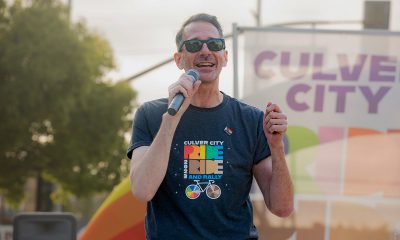
 Features5 days ago
Features5 days ago“We will get through all of this”: Culver City’s first LGBTQ+ Mayor discusses queer community and hope
-
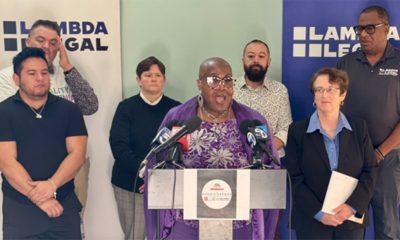
 Los Angeles3 days ago
Los Angeles3 days agoAdvocates demand that trans youth be protected as cases are argued in Supreme Court
-
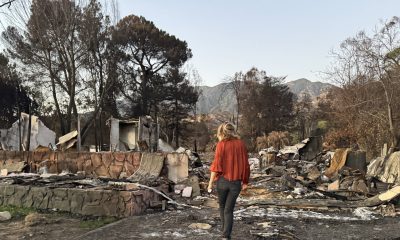
 Film3 days ago
Film3 days ago‘All The Walls Came Down’ gives a voice for the Altadena fire survivors
-

 Movies4 days ago
Movies4 days agoRise of Chalamet continues in ‘Marty Supreme’
-

 Dorian Film Awards5 days ago
Dorian Film Awards5 days ago‘One Battle After Another,’ ‘Sorry, Baby’ and ‘Sinners’ among 2026 Dorian Film Award nominees
-
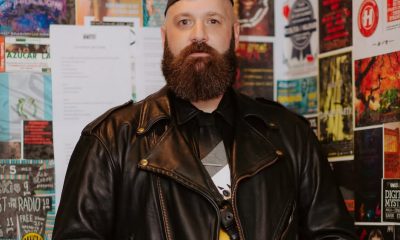
 Leather community4 days ago
Leather community4 days agoBEAR SIGHTING: Looking into the next chapter with Mr. LA Leather Bear 2025 Mike Klipsch
-

 Commentary18 hours ago
Commentary18 hours agoWhat do we sacrifice to get laid?
